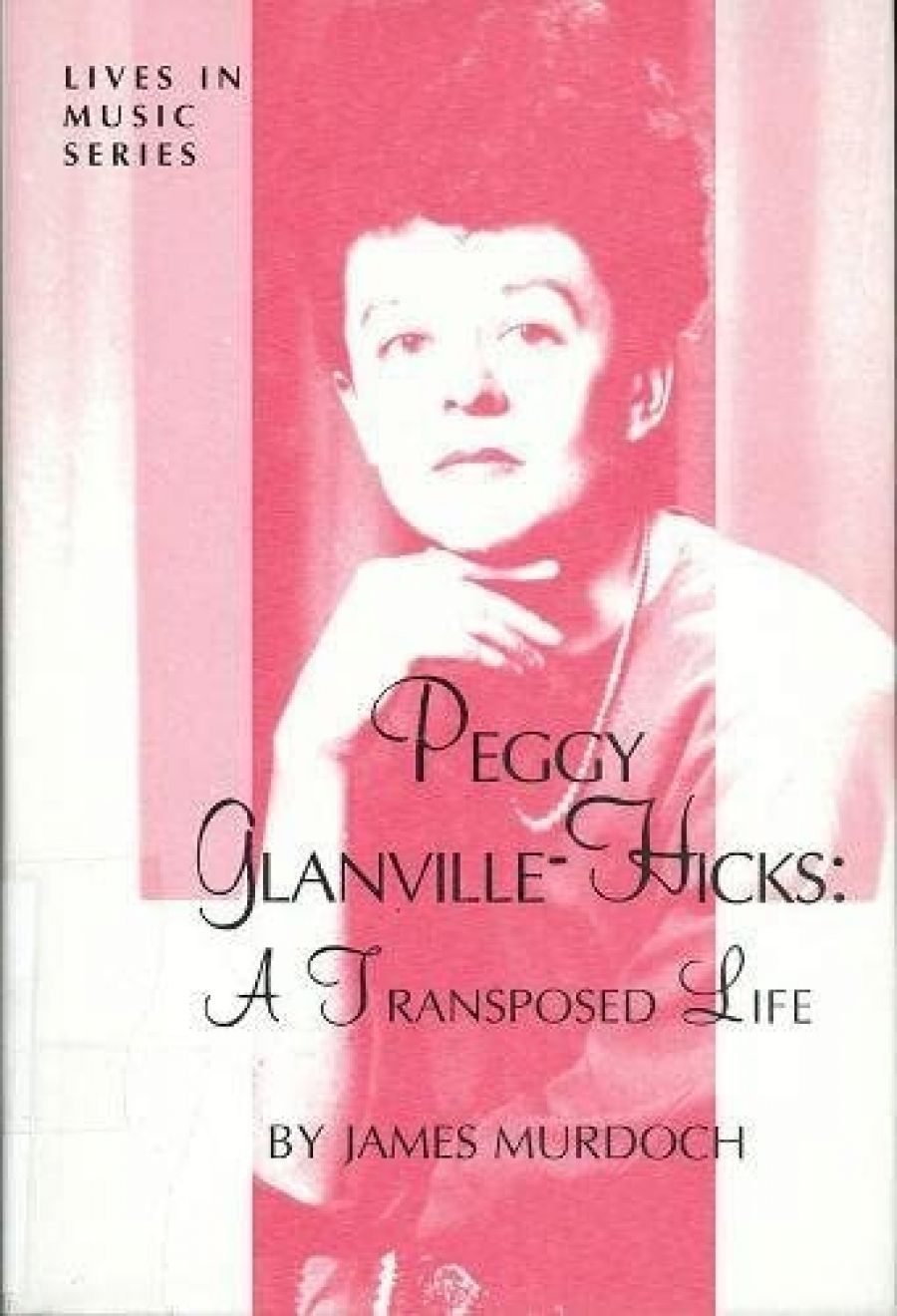
- Free Article: No
- Contents Category: Biography
- Review Article: Yes
- Article Title: A small oeuvre
- Online Only: No
- Custom Highlight Text:
Peggy Glanville-Hicks ranks as one of the few Australian composers whose international training and reputation mean that she remains vastly more appreciated outside Australia than within the shores of her native land. A student of Vaughan Williams and Nadia Boulanger, a close friend of the Menuhins, Carlos Surinach, and a host of other major figures, she was a genuine pioneer in the realms of ethnomusicology and music journalism, and an energetic advocate in the articulation of a post-serial musical aesthetic. Her courage and enduring individuality in all of these areas make her one of the most interesting figures in the annals of Australian composers.
- Book 1 Title: Peggy Glanville-Hicks
- Book 1 Subtitle: A transposed life
- Book 1 Biblio: Pendragon Press, $103 hb, 331 pp
Yet the biography also reveals some of the perhaps unintended concerns about Glanville-Hicks the composer. The most striking issue is the size of her output. According to Murdoch, the entire extant discography encompasses no more than twenty works. A chronologically arranged list of works from 1931 to 1991 is far more substantial, but many works are listed as unpublished, manuscript sources appear uncertain, and some works cited are fragments or even unfulfilled commissions. Indeed, Murdoch identifies her most creative period as the fifteen years between 1951 and 1966, her later potential curtailed by an operation for a brain tumour at the end of that year.
One effect of this on Murdoch’s biography is that the history of a relatively small number of works comes to dominate that part of the text dealing with Glanville-Hicks’s creative output. This is in stark contrast to the range and energy of her activities other than as a composer. The operas The Transposed Heads, Nausicaa and Sappho, the Etruscan Concerto for piano, the Concerto Romantica for viola and some of her ballets are discussed in often minuscule detail. Whilst interesting, this suggests a limited scope.
This biography tends to be not so much about the composer and oeuvre as about the temperament and foibles of a complex personality. Murdoch’s tone vacillates between reportage and gossipy revelations. The authority of his knowledge of Glanville-Hicks seems absolute, and many nuggets of fascinating personal details are revealed with delighted gusto. Other revelations may surprise, such as implications concerning Wendy Beckett’s involvement in the fate of the composer’s diaries, or Murdoch’s bizarre assertion that the painter, ‘Ahmed Yacoubi … was bisexual, like so many male Moroccans’. Murdoch’s intense personal familiarity with his subject also affects the schematic chronology that structures the biography. The central chapters of the text deal mostly with the late 1940s, the 1950s and the early 1960s. Given the nature of Glanville-Hicks’s output, this is reasonable. The difficulty is that the text tends to lunge backwards and forward within this time frame. Chapter Six, for example, is mostly about the 1950s, whilst Chapter Seven is largely preoccupied with the late 1940s. By Chapter Fourteen, we have reached 1958, only to find that we are taken back to the mid-1950s in Chapter Fifteen. This may circumvent the dreariness of a stricter chronology, but it can be dizzying for the reader.
Two other concerns must be mentioned. The first is a tendency to quote primary source material, often in very large chunks within the body of the text. Numerous letters are quoted virtually in full, almost without comment. Glanville-Hicks’s ‘case history’ concerning the gestation of Nausicaa runs for over six small-font pages, and a lecture to the University of Illinois, given in 1955, is recounted almost in its entirety. It seems strange that such material was not more properly housed in a series of appendices.
The second concern relates not so much to Murdoch’s writing as to his publisher, Pendragon Press. Regretfully, it has to be said that in places the text falls below what might be expected of a professionally published volume. Misprints, problems with footnoting, erratic font sizes, incomplete entries in the index – random checks showed those on Bartók, Vaughan Williams, Butler, and Dunsany were all incomplete – and a variety of other difficulties made the cumulative experience of this text not so much one of engagement as of tedious correction. We find la fille is ‘mal Gardèe’, and learn that Moritz von Bomhard died in ‘Salzbur’ amongst many other errors. I cannot resist quoting in full one of the most alarming: ‘during her recuperation she finished a remarkable 1949 birthday present for Virgil, ‘Thomsoniana. Five excerpts from the Daily Press, by Virgil Thomson;’ it was performed at Colfor a minute meant to be beautiful.umbia University in 1950.’
Sicut indeed.


Comments powered by CComment